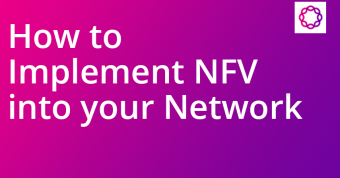Seven Stellar Trends for 2015 as Software Everywhere Continues To Change RTC Forever
As the holidays continue, and we all rest up for the exciting year ahead, I thought we’d share the constellation we see forming here at GENBAND in the expanding universe of Real-Time Communications software and solutions. We see software everywhere, in the network, at the edge, on the device, and embedded in applications. The evolution of the communications cloud and “communications-as-a-service” is continuing to skyrocket. Here are seven streams of predictions. These streams are converging into rivers that run into oceans, with a tremendous amount of overlap – a good thing! Software and cloud mean developers can build and launch services faster and with less risk than ever before, and that ecosystems can work more fluidly together, with less painful “interop” – especially with open “platforms-as-a-service” like GENBAND’s Kandy.
NFV Takes Off
After what some may consider a slow start over the last few years, Network Functions Virtualization (NFV) began trending very fast (especially in the last half of 2014) and we foresee an interesting ride in 2015 and beyond as more and more companies invest in scalable and elastic NFV architecture for real-time communications. “Co-optition” is natural here as NFV ecosystems make so much sense, and as large service providers in all categories (fixed, cable, wireless, mobile, virtual network operators) not only prefer NFV but are demanding it. We believe NFV is one large and important piece in the movement of service providers to “outcome-based models.”
VoLTE Matures Fast
LTE and VoLTE will continue to grow at a healthy clip and 2015 may be “the year” where VoLTE is normalized. But VoLTE is just one solution to providing high quality, predictable and affordable voice services. With VoIP still growing and the massive popularity of “OTT” services, including extremely high valuations of companies like WhatsApp (bought by facebook for $19B), perhaps there are two paths growing in parallel. Whatever the race, service providers are running fast to stay attractive to their subscribers including blending solutions which is all the more possible within the “software everywhere” world. Bandwidth still matters, and we’re also seeing a ton of interest in mobile offload, with VoLTE sessions moving to Wi-Fi networks reducing the strain on the capital intensive wireless infrastructure.
WebRTC Goes Mainstream with Real World Successes
The game is really on now, with the consumer media now writing about browser-based real-time communications made possible by WebRTC, ORTC and other evolving web-based communications standards. As I predicted in June, Microsoft joined in this year, and Apple cannot be too far behind in 2015 (still sticking to that prediction!). Android developers lead the pack, with the gale force winds of Google and the original WebRTC coalition’s hard work coming to commercial fruition. Large service providers, systems integrators, software vendors, and web companies are now moving out of the beta tests and labs and into commercial operation. Hundreds of smaller entrepreneurial companies with creativity and agility are building solutions in healthcare, contact centers, education, banking, retail and more. Browser-based makes video a lot easier and more intuitive, and the applications themselves more “human” with more “non-verbal communications” and data mashups making better interactions possible.
The Internet of Everything and Everyone
The “IoE” will continue to impact all modes of computing and communications, and will continue to spur creativity that will change the way machines and machines, and humans and machines interact with each other. There’s more of everything including access points: screens, sensors, wearables, virtual reality systems…our “vital signs” can be tracked and managed, our cars can be protected and even driven, our crops can go to market more rapidly for fresher food on our family tables, our air can become cleaner, and billions of dollars can be saved by enterprises with more granular measurement and management of “things.” And we’re still just at the beginning of this era – much more than a trend, we are entering a new real-time communications era. I see the wave of the Internet of Everything driving new ways to communicate between our machines and humans with more speech recognition, deep cognitive systems and real-time decision making and alerting becoming the norm.
Platforms Push Outcomes
As more and more software is delivered via an outcome-based model (as-a-service with business outcome-based pricing), even greater consumerization of IT will take place in 2015. Platforms which wrap or incorporate multiple APIs and broker information between systems will become the heartbeat of every business owner who wants easier, more available, more intuitive and less expensive ways to run their business, including data (and Big Data), software control and management solutions, and constant communications, enabling human intervention – when necessary. Platforms make more possible and the economics of agile development and “pay-as-you-go” business models cannot be ignored. These outcome-based models push the decisions for information spending closer to the business makers and farther from the traditional IT centralization. A new breed of IT leader is arising that is brokering and allowing these business-based models for the advancement of the enterprise.
Narrowing the Digital Divide
As the gap grows between those “on the grid” and those not, we all face a difficult challenge – how do we make sure we don’t create a disenfranchised “unwired” class? Communications works miracles economically, socially and politically as connected human beings are empowered to make their communities and the world more democratic, productive, safe and healthy places. Let’s bring everybody with us on our journey to create not just wealth but real value through our work endeavors; we are fortunate to be in this era and in this industry – let’s share this value and not let anyone be left behind.
Storytelling
The art of persuasion will become even more artful. Explaining is hard. Convincing is hard. Consumers, business decision makers included, are enraptured by increasingly beautiful and entertaining media, bored by PowerPoint presentations, and aggravated by “too much information.” Storytelling simplifies and makes the abstract real. Powerful storytelling amplifies. Real-time communications tools including video, and real-time targeting and response tools are changing forever how we build brands and sell products and services. In 2015 the intersection of real-time communications technologies and advancements in “martech” will create a perfect environment for even more creativity in this area, as “conversations” are embedded into the art – and science – of persuasion.
We’d love to hear what you think 2015 has in store, and to work together with you to create the future of RTC in ways that not only surprise but scale and succeed. These trends are substantial – even stellar – which means for those of you who share our passion for real-time, a galactic year lies ahead. Get ready for lift off!
Brad




